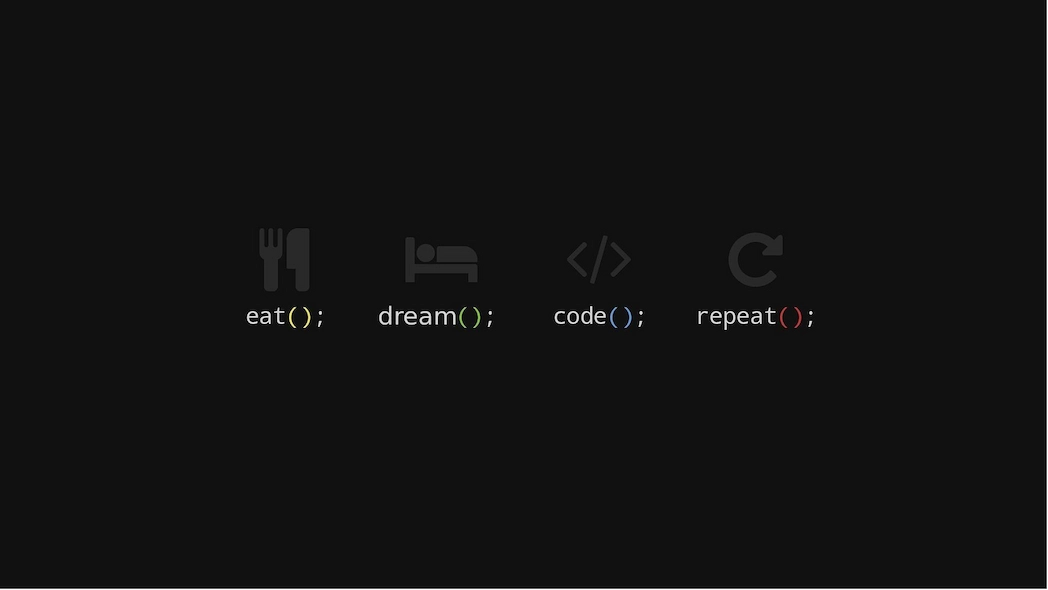


The MERN Stack is a collection of JavaScript technologies commonly used to build modern, scalable, and dynamic web applications. The name is an acronym that represents the four main technologies in the stack:
MongoDB (M):
Express.js (E):
React.js (R):
Node.js (N):
The MERN Stack is particularly popular among startups and companies looking to build fast, interactive web applications.
In software development, semantics refers to the meaning or purpose of code or data. It focuses on what a program is supposed to do, as opposed to syntax, which deals with how the code is written.
a = 5
b = 0
print(a / b)2. HTML Semantics:
<header> instead of <div> for a webpage header.3. Semantic Models:
In software development, syntax refers to the formal rules that define how code must be written so that it can be correctly interpreted by a compiler or interpreter. These rules dictate the structure, arrangement, and usage of language elements such as keywords, operators, brackets, variables, and more.
Language-Specific Rules
Every programming language has its own syntax. What is valid in one language may cause errors in another.
Example:
Python relies on indentation, while Java uses curly braces.
Python:
if x > 0:
print("Positive Zahl")Java:
if (x > 0) {
System.out.println("Positive Zahl");
}Syntax Errors
Syntax errors occur when the code does not follow the language's rules. These errors prevent the program from running.
Example (Syntax error in Python):
print "Hello, World!" # Fehlende Klammern3. Syntax vs. Semantics
4. Tools for Syntax Checking
Variable Naming: Variable names cannot contain spaces or special characters.
Variablenbenennung: Variablennamen dürfen keine Leerzeichen oder Sonderzeichen enthalten.
my_variable = 10 # korrekt
my-variable = 10 # Syntaxfehler{ ... }.
An object-oriented database management system (OODBMS) is a type of database system that combines the principles of object-oriented programming (OOP) with the functionality of a database. It allows data to be stored, retrieved, and managed as objects, similar to how they are defined in object-oriented programming languages like Java, Python, or C++.
Object Model:
Classes and Inheritance:
Encapsulation:
Persistence:
Object Identity (OID):
Complex Data Types:
Object-oriented databases are particularly useful for managing complex, hierarchical, or nested data structures commonly found in modern software applications.
Data Definition Language (DDL) is a part of SQL (Structured Query Language) that deals with defining and managing the structure of a database. DDL commands modify the metadata of a database, such as information about tables, schemas, indexes, and other database objects, rather than manipulating the actual data.
1. CREATE
Used to create new database objects like tables, schemas, views, or indexes.
Example:
CREATE TABLE Kunden (
ID INT PRIMARY KEY,
Name VARCHAR(50),
Alter INT
);2. ALTER
Used to modify the structure of existing objects, such as adding or removing columns.
Example:
ALTER TABLE Kunden ADD Email VARCHAR(100);3. DROP
Permanently deletes a database object, such as a table.
Example:
DROP TABLE Kunden;4. TRUNCATE
Removes all data from a table while keeping its structure intact. It is faster than DELETE as it does not generate transaction logs.
Example:
TRUNCATE TABLE Kunden;DDL is essential for designing and managing a database and is typically used during the initial setup or when structural changes are required.
A CRM (Customer Relationship Management) is a strategy, software, or system designed to help businesses manage their relationships with customers, prospects, and partners. The goal is to build long-term customer loyalty, optimize business processes, and improve customer satisfaction.
A CRM is especially valuable for businesses handling numerous customer interactions and aiming to deliver personalized service.
Platform as a Service (PaaS) is a cloud computing model that provides a platform for developers to build, deploy, and manage applications without worrying about the underlying infrastructure. PaaS is offered by cloud providers and includes tools, frameworks, and services to streamline the development process.
In summary, PaaS enables fast, simple, and flexible application development while eliminating the complexity of managing infrastructure.
A Remote Function Call (RFC) is a method that allows a computer program to execute a function on a remote system as if it were called locally. RFC is commonly used in distributed systems to facilitate communication and data exchange between different systems.
A Software Development Kit (SDK) is a collection of tools, libraries, documentation, and examples that developers use to create applications for a specific platform, operating system, or application programming interface (API). An SDK simplifies and standardizes the development process.
SDKs are typically used for:
The Android SDK includes everything developers need to build Android apps, such as emulators and libraries for Android-specific features like GPS or notifications.
In summary, an SDK streamlines development, reduces complexity, and ensures developers work consistently with the target platform.
SonarQube is an open-source tool for continuous code analysis and quality assurance. It helps developers and teams evaluate code quality, identify vulnerabilities, and promote best practices in software development.
Code Quality Assessment:
Detecting Security Vulnerabilities:
Technical Debt Evaluation:
Multi-Language Support:
Reports and Dashboards:
SonarQube is available in a free Community Edition and commercial editions with advanced features (e.g., for larger teams or specialized security analysis).